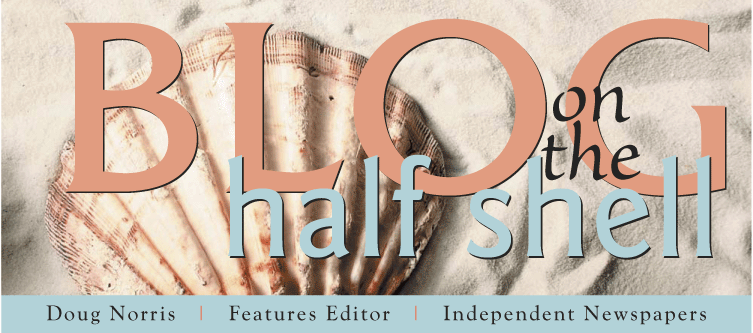The romance of pirates never seems to fade, despite the grim details emerging weekly from modern pirates mistreating or killing yachters and sailors in the Indian Ocean and Gulf of Aden. The violence associated with corsairs of legend – clashing swords, walking planks, firing cannon – is the stuff of adventure, somehow different from the gruesome news accounts of brutal, bloody shootouts and kidnappings. With old-school pirates, it’s the rogue spirit people seem to respond to, the sense of freedom on the high seas, the lure of buried treasure, the cult of personality and the classless ideal of sharing the common spoils.
And nowhere in the United States is piracy more revered than in Rhode Island, where re-enactors like the Rhode Island Pirate Players and the Free Men of the Sea (based in Connecticut) spread the gospel of buccaneer life at festivals throughout the year, including this weekend’s “Bridge to the Past” at Smith’s Castle in Wickford. Along the banks of the Cocumscussoc, the Free Men will launch an exhibition “PIRATES! Against all flags,” that will give visitors a glimpse into the fact and folklore of long-ago pirates on the New England coast, allowing them to view period weapons, pirate flags, coins and other treasure, types of punishments and other paraphernalia. The event coincides with Sunday’s May Fair in East Greenwich, called “Pirate Palooza.” Earlier this month, the R.I. Pirate Players, who entertain visitors to Newport every summer with their walking tour “Dead Men’s Tales,” became the first Rhode Island pirates to receive a letter of marque – also known as a privateering commission – from the governor (Lincoln Chafee in this case) since Gov. William Jones issued letters of marque during the War of 1812.
(Side note: It's common to see Rhody vessels and even some houses still flying versions of the Jolly Roger - or skull-and-crossbones flags. Rebel flags in general remain popular here in The Independent State. You can spot a Confederate flag now and then in rural Rhody. Even more common is the "Don't Tread on Me" flag...although I saw more of them around before it was usurped by the Tea Party. There are still a few traditionalists, but even then, many residents flying national flags haven't gotten around to changing from the original circle of 13 stars yet.)
During the Golden Age of Piracy, from the late 17th through the early 18th century, piracy was – like slavery – an industry of its own in Rhode Island. Although most went under the legal “privateer” label, pirates commonly fitted out in Rhode Island while residents answered the equivalent of “Pirate Needed” Help Wanted ads to serve as crew members. And Rhody, especially Newport, was a refuge for many of the most notorious swashbucklers, including William Kidd, Blackbeard, Henry Every and Thomas Tew, most of whom supposedly buried booty in and around Block Island or Aquidneck Island – as yet undiscovered (or unreported).
Every, considered “The King of Pirates” since he acquired more plunder than any other freebooter, captured the biggest treasure ever on a ship belonging to the Great Mogul of India, then supposedly came to Providence in 1696 on his ship Charles (alias Fancy) after leaving his home port of Madagascar to outfit himself with a new ship that would take him to retirement on the west coast Ireland. In 1698, the London Board of Trade reported “pieces of Arabian gold are common in New York and Rhode Island, after the arrival there of pirate Captain Coats from the Red Sea.” In 1702, maritime historian William Clark wrote “every man in Newport is either a pirate or privateerman.” In 1716, Edward Teach, better known as Blackbeard, is known to have enjoyed an extended stay in Providence. Long after piracy died out in most of the Colonies, Rhode Islanders were still going on raids, claiming prizes and pocketing sterling, gold and jewels. It took the merchants to change things. As merchant ships began crowding Rhode Island harbors, their owners didn’t want their vessels to become pirate prizes, so they forced local politicians to enforce and strengthen the laws against piracy. In 1723 at Gravelly Point near Newport, 26 men were hanged for piracy, putting an exclamation point on how seriously Rhode Island law officials were taking the new rules.
Thomas Tew, often called “The Rhode Island Pirate,” lives on in a rum named after him, produced by the Newport Distilling Co. Made with blackstrap molasses, pot stills and local water, and aged in French and American oak barrels, the rum harks back to when Newport was the rum capital of the world. By 1769, 22 distilleries were operating in Newport. During this time, according to a Web site featuring “A Condensed History of Rum,” “New England rum was considered to be better than that of the Caribbean. Rhode Island rum for a short period was so popular that it was actually used as currency in Europe alongside of gold.” But the drink fell out of favor during the next century. By 1817, only two distilleries remained in town. The John Dyer Distillery in Providence, the last standing in the state, shut down in 1872. So Thomas Tew, which produced its first bottle in 2007, was the first Rhode Island-made rum in 135 years.
Aside from wampum and rum, what would be an appropriate alternative form of currency for Rhode Island today?
Monday, April 25, 2011
Subscribe to:
Post Comments (Atom)


2 comments:
the foodie in me says stuffie sliders.
Count me in. I'd take a paycheck in stuffie sliders...or anything else that comes out of a shell in Rhody waters.
Post a Comment